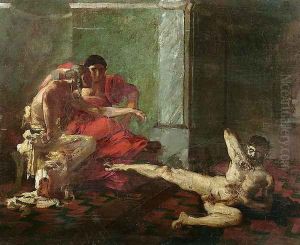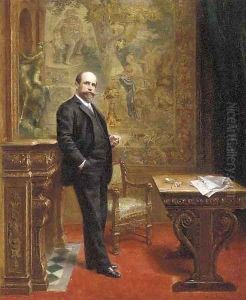Joseph-Noel Sylvestre Paintings
Joseph-Noël Sylvestre was a French painter born on December 24, 1847, in Béziers, France. Sylvestre, who specialized in history paintings, is particularly renowned for his depictions of scenes from ancient Rome. He was a student at the École des Beaux-Arts in Paris and trained under Alexandre Cabanel, a well-known academic painter of the time. Sylvestre's works are characterized by their historical accuracy, attention to detail, and dramatic intensity, following the academic tradition of his era.
Throughout his career, Sylvestre received various honors for his work. He won the Prix de Rome in 1870 which allowed him to study at the Villa Medici in Rome, an opportunity that had a profound influence on his artistic direction. During his stay in Italy, Sylvestre developed a deep interest in ancient history and archeology, which would become central themes in his paintings.
Sylvestre's most famous painting is probably 'The Sack of Rome by the Barbarians in 410', completed in 1890. This monumental work showcases his ability to convey complex historical events with emotional depth and drama. It reflects his meticulous research into costumes, architecture, and historical context.
In addition to history paintings, Sylvestre also painted portraits and participated in the decoration of various public buildings. His works can be found in several museums and institutions across France.
Joseph-Noël Sylvestre passed away on October 21, 1926, in Paris. His legacy lives on through his contributions to academic and historical painting during the late 19th and early 20th centuries, and he remains a respected figure for those interested in the artistic representation of history.


